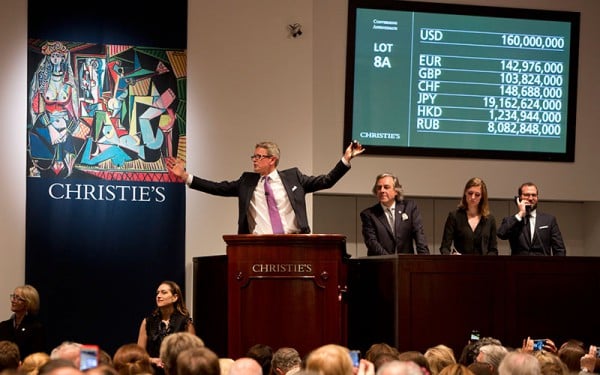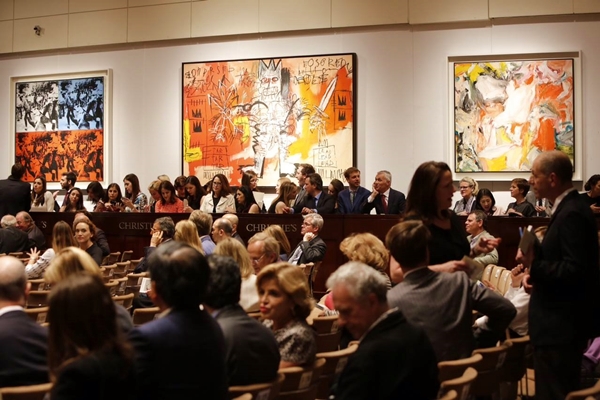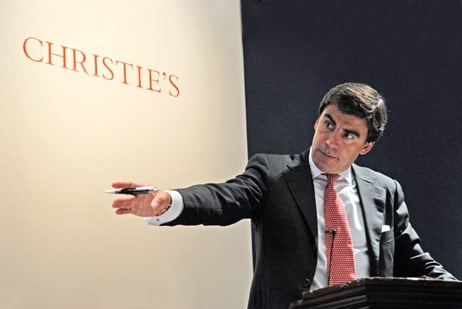Auctions
Christie’s 2015 Performance Report is Confusing, Contradictory, and Inflated


Eileen Kinsella

On July 20, Christie’s released a performance report about its business operations for the first half of 2015. However, it’s tough to determine how the privately-held auction house is doing, exactly.
Unlike its publicly-traded rival Sotheby’s, Christie’s is not required to release detailed quarterly and annual reports that meet Securities and Exchange Commission (SEC) standards and provide some measure of costs and profitability.
Instead, what we get are some solid overall numbers that reflect the seemingly healthy, overall state of the global art market, but also a lot of varying statistics and claims. Also, there is the issue of comparing percentage growth with the British pound sterling (fittingly, since the company is headquartered in the UK), with percentage growth on a US dollar basis, since major sales take place at their Rockefeller Center location.
Overall, Christie’s reports sales in the first six months of the year totaling £2.9 billion, which marks an eight percent increase from the £2.7 billion recorded in the comparable period for 2014. However, as the report points out, in US dollar terms this “suggests” zero percentage growth because of the weakening of other international currencies against the dollar. So on this basis, results are flat at $4.5 billion from the first half 2014.
Not surprisingly, Christie’s postwar and contemporary sales, a category which the house has completely dominated for several years now, saw robust growth. Christie’s said the category recorded a total of £927.7 million for the first half, an increase of 16 percent from the £799.9 million total of 2014 (once again, on a USD basis, that percentage growth is lower, at eight percent, which is not surprising).
There is also some unevenness in the statistics Christie’s chooses to reveal. While the 2014 report touts 51 works sold for over $10 million, there is no comparable statistic mentioned in the current report. Whether it’s higher or lower this time around—artnet News inquired and we are waiting to hear back from company representatives—if it’s a meaningful measure, why not make it a consistent one?

Inside the salesroom during Christie’s record-setting $745 million sale.
Photo: Courtesy of Christie’s.
Another curious result was the dip in private sales for the first half, to £333 million, from £498.9 million in 2014. Nowhere does Christie’s point out that this marks a 33 percent decline on a year-over-year basis. Instead the release states: “Private sales are on track for a record year…with a significant pipeline of business activity expected to close in the second half.” Which is all fine and good. But for now, private sales are down by a third, according to our calculations.
In response to an artnet News inquiry, Christie’s senior vice president of global corporate communications Jennifer Ferguson said it is “just a timing issue.” She continued, “[Private sales] doesn’t have the same timing flow as auction, since deals can initiate and close at any time during the year and are not in tune with a traditional sales calendar. We currently have many transactions in progress, even though they did not close prior to the 1st half. We expect to close them and many others which are in our pipeline before the end of the year, putting us on track for our target.”
The report was more straightforward when it came to reporting a dip in sales of Old Masters, which fell 32 percent to £71 million. This includes the categories of 19th century European paintings and Russian art. “This was felt across the whole market due in part to a drop in consignments for the half year and buyer selectivity,” according to the report.
Another shift that stands out is the addition of several new genres to the category of Impressionist and modern art sales. According to Christie’s, the total for Impressionist and modern art in the first half of 2015 was £771.6 million ($1.19 billion) which the house says “re-establishes Christie’s as the global market leader in this category.”

Auctioneer Andreas Rumbler.
Photo: Courtesy of Christie’s.
Indeed, Christie’s shake-up of the recent spring sales calendar, particularly with the addition of a hybrid sale titled “Looking Forward to the Past,” made history this past May. Picasso’s Les Femmes d’Alger (Version O) (1955) sold for $179.4 million, setting the record for the most expensive painting ever sold at auction by far. It was followed by another stunner, a $141 million price for Alberto Giacometti’s sculpture, Pointing Man (1947). The impact of such blockbuster lots is undeniable.
So why did Christie’s add even more “related sale” categories to the Impressionist coffers in the latest report?
The 2014 report states that the Impressionist and modern category totals “included Modern British art.” But the current 2015 report has even more categories included to shore up the number it posted: “The related categories of Modern British Art, American Paintings, and Latin American Paintings that make up the Impressionist and modern art group also performed well in the first half, realizing a combined total of £848.2 million an increase of 36 percent over the same period last year.”
Since when are Latin American art and American art considered part of Impressionist and modern sales?
“The grouping of Mod Brit, AMP and LAP with ImpMod is new this year. Periodically, we review our departments to see what makes the most sense in terms of efficiencies and collaboration. As such, the ImpMod group now includes AMP and LAP,” Ferguson writes.
Sotheby’s will report their second quarter and six-month earnings in early August.
For related coverage, see:
Why Is Christie’s Shaking Up Its Spring Auction Season?
$179 Million Picasso Sets Stratospheric Record at Christie’s $705 Million Looking Forward Sale
Christie’s Impressionist and Modern Market Share Collapses as Sotheby’s Grows
Epic Christie’s $852.9 Million Blockbuster Sale Is Highest Ever
New Data Show Phillips Market Share Growing But They Still Trail Sotheby’s and Christie’s